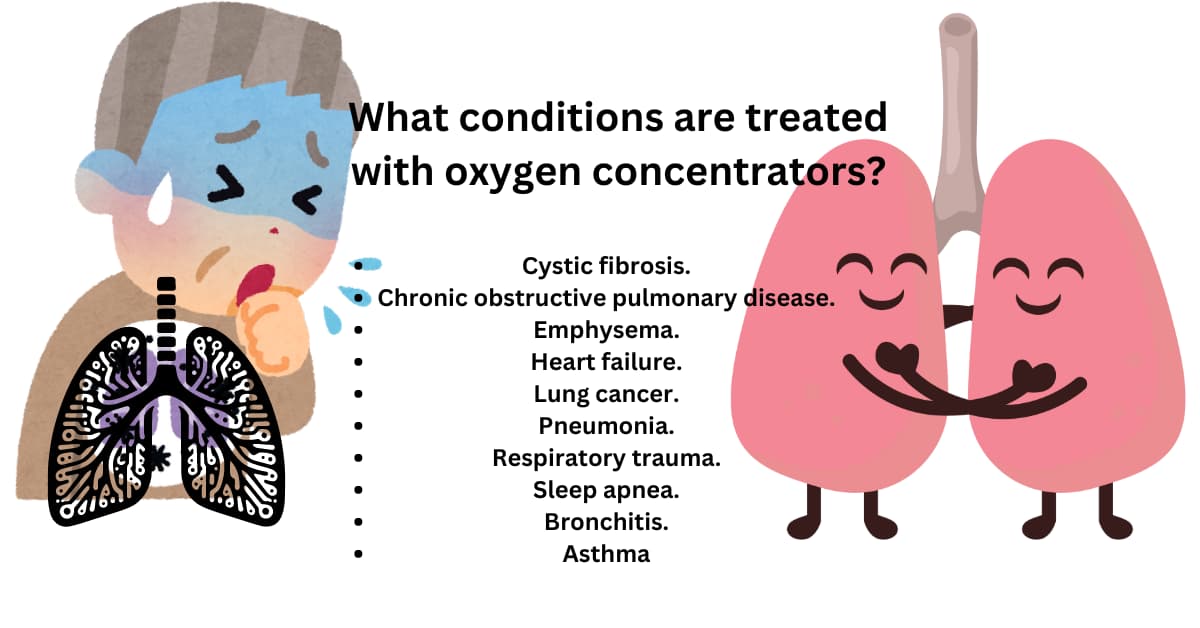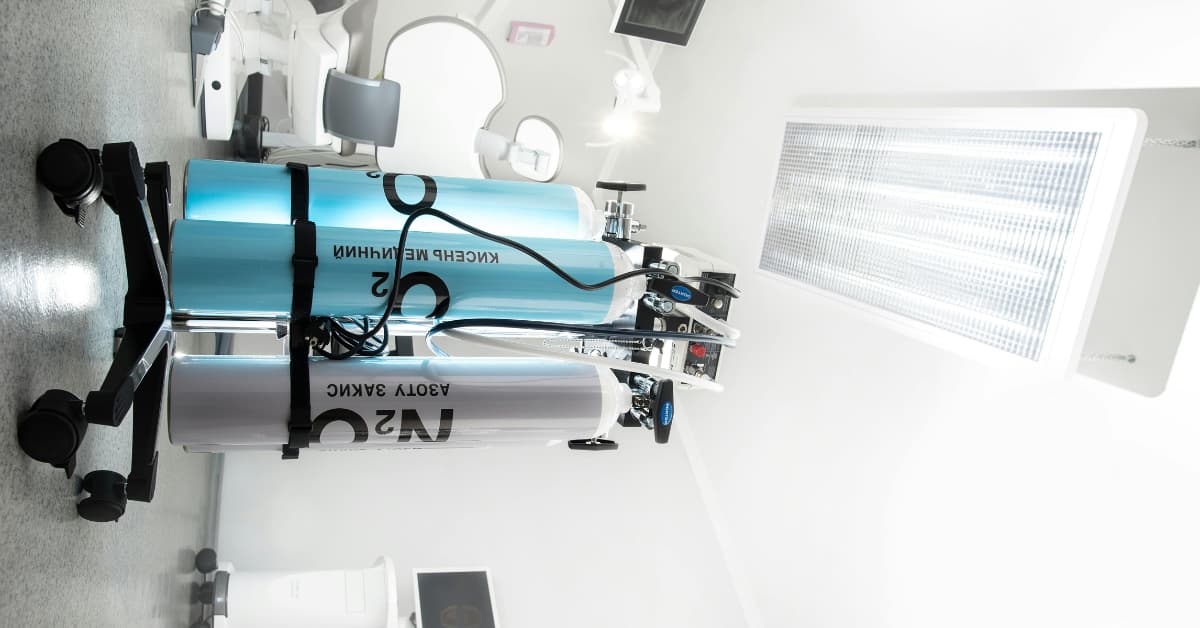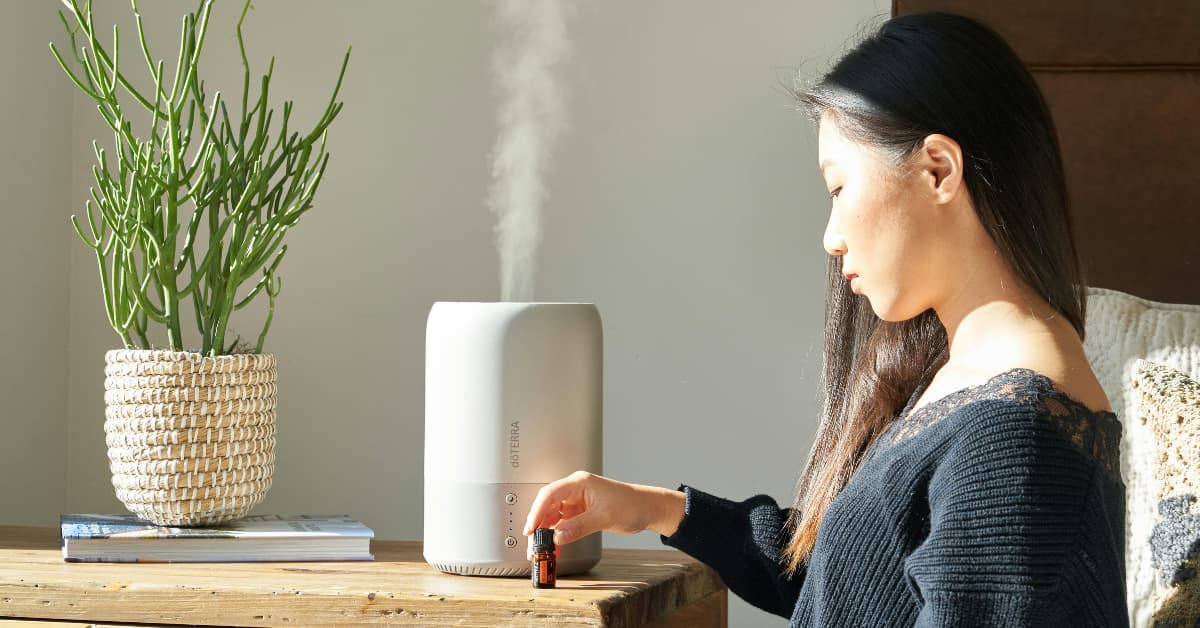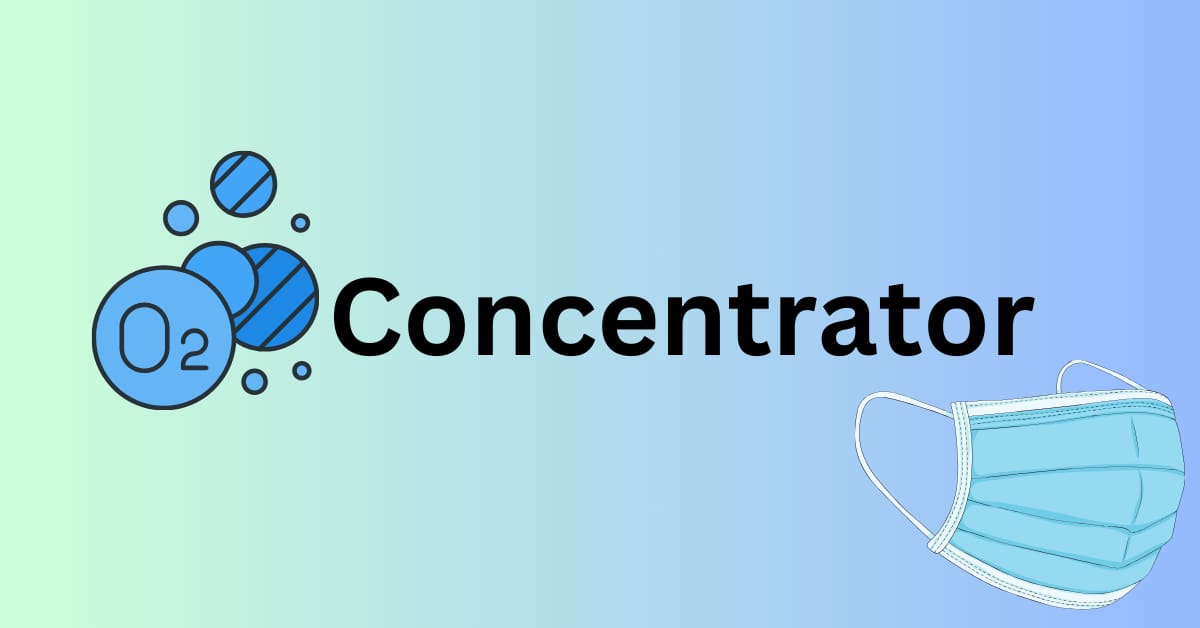Introduction
Oxygen concentrators take air from the surroundings or atmosphere, extract oxygen and filter it into purified oxygen for breathing. Oxygen can dry your nose, so some patients use a humidifier bottle attached to their home unit to help moisten the oxygen they inhale.
An oxygen concentrator is a medical or medicative device that gives you extra oxygen. air comprises about twenty per cent oxygen. An oxygen concentrator utilizes the air in the atmosphere or air space, filters it, and gives you 90%—95% oxygen.
It would help if you got your doctor’s OK before you use an oxygen concentrator. Using one without a prescription can be dangerous and cause lung damage.
Suppose the doctor thinks a concentrator might be suitable for you. In that case, they’ll let you know how much oxygen to take, how to use it properly, and how long to use the device so it doesn’t interfere with daily activities like bathing, working, and sleeping.
Oxygen concentrator
An oxygen concentrator isn’t the same as an oxygen tank, which gives liquid or gas oxygen. Instead, the concentrator is a machine that utilizes the air or atmosphere’ air around you to make oxygen. The machine pulls air in through a strainer and into an air compressor or condenser.
Many filters trap nitrogen & let the oxygen between, where it is collected or controlled in a tank. A narrow tube runs from the device to the face, giving you this oxygen through 2 open prongs below the nostrils or a facemask.
There are two kinds of concentrators: a bigger model for home use and a lighter, portable model for travel use. A typical single-battery oxygen concentrator lasts 2 to 6 hours, and a double-battery model lasts 5 to 13 hours. If the model has a plug rather than a battery, it will work as much as it’s plugged in. You will generally need to use the oxygen concentrator for 15 to 24 hours daily.

What are the types of oxygen concentrators?
There are two chief kinds of oxygen concentrators:
- Stationary oxygen concentrator. A stationary oxygen concentrator weighs roughly 22 pounds or around 10 kilograms. It has handles on the bottom to lift and roll the device. It runs on electricity, so plug it into an electrical outlet in the home. In the event of a power outage, many brands of oxygen concentrators come with a backup compressed oxygen tank, so you can still take oxygen therapy until the power comes back on.
- Portable oxygen concentrator. Portable oxygen concentrators are lighter and smaller than stationary ones, allowing for more accessible activity or travel. However, their oxygen output is usually lower than that of stationary concentrators. Many portable oxygen concentrators use rechargeable lithium-ion batteries.
What are oxygen concentrators?
Oxygen concentrators (oxygen generators) are medical devices that can be used for oxygen therapy. If you have a condition that impacts the lungs or even difficulty breathing, an oxygen concentrator helps give the body the oxygen required to function.
Unlike a liquid oxygen tank you must refill when you give out oxygen, an oxygen concentrator constantly purifies and cleans the air around you to deliver 90% to 95% fresh oxygen. You breathe in the oxygen across a plastic mask that covers or wraps the nose and mouth or a flexible plastic tube with two spikes that go into the nostrils.
Only use an oxygen concentrator if a healthcare provider prescribes one. Breathing in pure or fresh oxygen may cause long-term lung harm if you don’t require oxygen.

What conditions are treated with oxygen concentrators?
A healthcare provider or doctor may prescribe an oxygen concentrator if you have:
- Cystic fibrosis.
- Chronic obstructive pulmonary disease.
- Emphysema.
- Heart failure.
- Lung cancer.
- Pneumonia.
- Respiratory trauma.
- Sleep apnea.
- Bronchitis.
- Asthma
Some people, particularly athletes, use an oxygen concentrator when they visit high-altitude places or locations. You breathe harder when you work out or exercise because your body demands more oxygen. Your lungs supply oxygen that the body uses to function.
If heavy breathing doesn’t provide sufficient oxygen, cells convert carbohydrates into lactate for short bursts of energy. This process is called anaerobic glycolysis. Using an oxygen concentrator helps prevent the body from producing lactic acid, which increases energy, reduces fatigue, and improves training.

Oxygen concentrator vs oxygen tank
Two main types of oxygen tanks are used for supplemental therapy: compressed and liquid.
- Compressed oxygen is stored in a metal cylinder at least 95 per cent. The cylinder has a regulator that lets you breathe oxygen in and closes when you breathe out.
- Liquid oxygen is 100 per cent oxygen in liquid form that you transmit in a tank. Oxygen becomes liquid at -297 degrees F. It’s compressed to fit into the tank, and when you discharge it, it turns back into gas. You must be careful with liquid oxygen tanks because exposure to the liquid oxygen can cause a cold-temperature burn or frostbite.
Is it reasonable to use an oxygen concentrator?
Taking yourself oxygen without talking to a doctor or healthcare provider may do more danger than good. You may end up taking too much or too little oxygen. Deciding to utilize an oxygen concentrator without a prescription may lead to serious health issues, such as oxygen toxicity that is caused by taking too much oxygen.
Home Oxygen Concentrator
Your doctor or health provider might prescribe a stationary oxygen concentrator if you need steady oxygen while in your house or sleeping. These are more massive than the travel oxygen concentrators, weighing about 22 pounds. You can lift the machine with its handles, but it also has wheels, so it can roll when walking around. These machines can generate up to 15 litres of oxygen per minute.
It runs on electricity, so you must always keep it plugged in for it to work correctly. This machine or concentrator may have a battery backup if the electricity goes out.
How do I use an at-home unit?
Follow the device’s instructions for maintaining and using it. The doctor or health adviser will tell you what level to set the oxygen flow rate to—the number of litres per minute. Please don’t change your doctor’s prescribed rate unless they tell you to.

Some adjustments could help the concentrator work better for you:
- Add a humidifier. If the excess oxygen you get dries out the nose, you may be able to attach a humidifier bottle to the unit. You fill it with distilled water, making the oxygen you breathe moister.
- Lengthen the tubing. A hose attachment can extend the tube from the machine to your nose by up to 50 feet. Be alert not to trip on the hose while you walk around.
Portable oxygen concentrator
A portable oxygen concentrator, also called a travel oxygen concentrator, is lighter and smaller than the at-home version, so you may use it while running errands or travelling. The device fits in a pack with a handle or sling over your shoulder. Massive devices may be on a cart with wheels that you pull. Portable oxygen machines or concentrators run on a rechargeable battery and weigh between 2 and 20 pounds.
Because they are less, portable concentrators give you less oxygen than an at-home machine. It supplies oxygen by pulse dose, meaning it comes out in tiny bursts each time you inhale. Some models may also give you oxygen at a steady flow rate.
How do I use a portable oxygen concentrator?
Listen to the doctor’s advice and instructions with your device. You’ll also want to:
- Carry an extra battery. Although the device’s display panel should tell you how much battery life is left, buy a spare if you won’t be home for a while.
- Clean your gear regularly. Wash the tubing or facemask weekly with warm water and mild dish soap. If you get sick, clean it more often. Let air dry, and don’t let water enter the tube. If the tubing looks damaged, get a renewal from the oxygen supplier. Follow the maker’s directions on how to clean the filter.
How to increase oxygen level immediately
Open windows or get outside to breathe in fresh air or fresh surroundings. Something as easy as opening the windows or going for a little walk increases the amount of oxygen your body brings in, increasing your overall blood oxygen level. It also has benefits like more energy—and improved digestion.

How to increase blood oxygen level
- Breathing in fresh Air: Opening the windows or going outside for a walk may increase the amount of oxygen the body brings in, increasing the overall blood oxygen level.
- Quitting smoking: Your circulation will likely improve remarkably within the first two weeks after you stop smoking. Shortness of breath drops after one to nine months. These aspects contribute to the body’s ability to take in more oxygen.
- Practising breathing exercises: Simple breathing exercises, such as pursed-lip and deep belly breathing, may open the airways and increase the amount of oxygen in the blood.
Oxygen concentrator price
Portable oxygen device cost
New $2,000-$4,000
Used $1,000-$2,500
Rental Starts at about $150 per week
Oxygen concentrator health benefits
The main advantage of oxygen concentrators is that they help you breathe easier and faster. They aren’t a cure for your condition and may not wholly relieve shortness of breath. But it should be effortlessly or easier to breathe. Higher oxygen levels in the blood may also give you more energy and help you sleep better.
Oxygen concentrator advantages and disadvantages
Another advantage is that, unlike other types of oxygen tanks, an oxygen concentrator doesn’t need to be refilled. You’ll have an unlimited oxygen supply if you have an energy source.
Oxygen concentrators must have a capacity or power source. If you utilize an oxygen concentrator, it’s an excellent plan to have at least one compressed oxygen tank in case your power goes out. It would help to have enough batteries or extra oxygen accessible for at least a few days.
Pure or fresh oxygen may also be harmful. It isn’t flammable. But it makes fire burn faster and hotter. It may also cause an explosion. Make sure you keep the oxygen concentrator at least 10 feet away from sources of flammable materials or high temperatures, including:
- Fires.
- Ovens.
- Oil.
- Paints and paint thinner.
- Rubbing alcohol.
- Oil-based products, such as petroleum jelly (Vaseline).
- Gasoline.
- Cigarettes and cigars.
- Grills
You should also avoid using electrical equipment around the oxygen tank. There’s a possibility that electrical equipment may spark and cause a fire. It includes items such as:
- Hair dryers.
- Electric blankets.
- Space heaters.
- Electric razors.
Conclusion
An oxygen concentrator is a medical or medicative device that gives you extra oxygen. air comprises about twenty per cent oxygen. An oxygen concentrator utilizes the air in the atmosphere or air space, filters it, and gives you 90%—95% oxygen.




